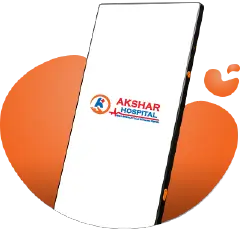Table of contents:
| 1. | Introduction |
| 2. | Importance of Burn First Aid for the Victim |
| 3. | FAQ'S |
| 4. | Conclusion |
Introduction
Burning injuries need immediate action of first aid, which is why here in this blog, we will learn about the importance of burn first aid.
Burn first aid is a crucial skill that significantly minimizes damage and promotes faster recovery. Everyone must understand the importance of prompt and appropriate actions when dealing with burns.
Immediate attention to a burn injury can help alleviate pain, prevent infection, and reduce the severity of long-term consequences. This article explores the fundamental principles of burn first aid, offering insights into proper techniques for cooling and treating burns at the initial stage. From assessing the degree of burns to applying suitable first aid measures, readers will gain valuable knowledge on how to respond effectively to burn injuries.
Equally important is recognizing when to seek medical help. While basic first aid is essential, inevitable burns may require professional intervention. This article provides clear guidelines on the warning signs and circumstances that indicate the need for medical assistance. People can make educated judgments about when to seek the advice of healthcare experts for additional assessment and treatment by being aware of these indicators.
Importance of Burn First Aid for the Victim:
It is important for the burned person to take immediate action and medical precautions to avoid burnout to expand and become more serious. Here are the importance of first aid and steps to take during the burn injury.
Immediate Action Matters:
Learn the essential steps for providing prompt and effective first aid in the event of a burn injury.
Quick response helps alleviate pain, prevent infection, and minimize the extent of damage.
Understanding Burn Degrees:
Know about the different degrees of burns and how to identify them. Tailor your first aid approach based on the severity of the burn.
Proper Cooling Techniques:
Discover the correct methods for cooling a burn, emphasizing the importance of using cool (not cold) water. Avoid common misconceptions and errors in the cooling process.
The Role of Dressings and Coverings:
Learn to do appropriate dressings and coverings for burns, ensuring a sterile environment for healing. Understand the significance of protecting the burn from further harm.
When to Seek Professional Help:
Identify the symptoms and indicators that point to the need for medical attention.
Understand the thresholds for seeking professional evaluation and treatment.
Special Considerations for Certain Burns:
Explore specific considerations for electrical, chemical, and other types of unique burn scenarios. Tailor your first aid response to the nature of the burn.
Long-Term Implications:
Understand the potential long-term consequences of improper or delayed burn care.
Emphasize the role of immediate first aid in preventing complications.
Educational Resources:
Highlight the availability of educational resources and training programs for burn first aid. Give knowledge about necessary precautions and how to use burn first aid to everyone around. Encourage individuals to equip themselves with the necessary skills and knowledge.
Contributing to Better Outcomes:
The impact of proper burn first aid in minimizing pain, promoting faster recovery, and improving overall outcomes. Do help everyone to contribute in spreading awareness about how to use burn first aid and help those in need. Stress the collective responsibility of individuals to create a safer environment through awareness and preparedness.
FAQS:
Que: Why is Immediate burn first aid crucial?
Ans: Immediate burn first aid is vital for several reasons, including pain relief, preventing infection, and minimizing the severity of the burn. Acting promptly can significantly impact the overall outcome.
Que: How do I determine the degree of the burn?
Ans: Burns are categorized into degrees based on their severity. First-degree burns are mild, while third-degree burns are more severe. Learn to identify these degrees to tailor your first aid response accordingly.
Que: What are the correct cooling techniques for burns?
Ans: Proper cooling involves using cool (not cold) water to lower the temperature of the burn. Discover the proper methods to avoid common mistakes during the cooling process.
Que: When should I use dressings and coverings for burns?
Ans: Dressings and coverings are crucial for protecting burns from infection. Learn the appropriate materials and techniques for creating a sterile environment to aid healing.
Que: How can I recognize signs that indicate the need for professional medical help?
Ans: Certain signs, such as blistering, severe pain, or burns affecting sensitive areas, indicate the need for medical assistance. Familiarize yourself with tense warning signs to make informed decisions.
Que: Are there specific considerations for different types of burns?
Ans: Yes, electric burns, chemical burns, and other burns may require unique first-aid approaches. Understand the specific considerations for different burn scenarios.
Conclusion:
In conclusion, understanding the importance of burn first aid and recognizing when to seek medical help is crucial in our collective journey toward safety and well-being. The immediate response to a burn injury, guided by knowledge of degrees, appropriate cooling techniques, and the significance of dressings, acts as a first line of defence. Beyond the initial steps, the pivotal realisation of when professional medical assistance is necessary shapes the recovery trajectory. This knowledge empowers individuals to become proactive stewards of their health, fostering a culture of preparedness and safety. The collective responsibility to create a secure environment becomes paramount as we navigate the delicate balance between at-home care and professional intervention. This understanding transforms information into action and serves as a testament to the role each of us plays in safeguarding our well-being and that of our communities.



